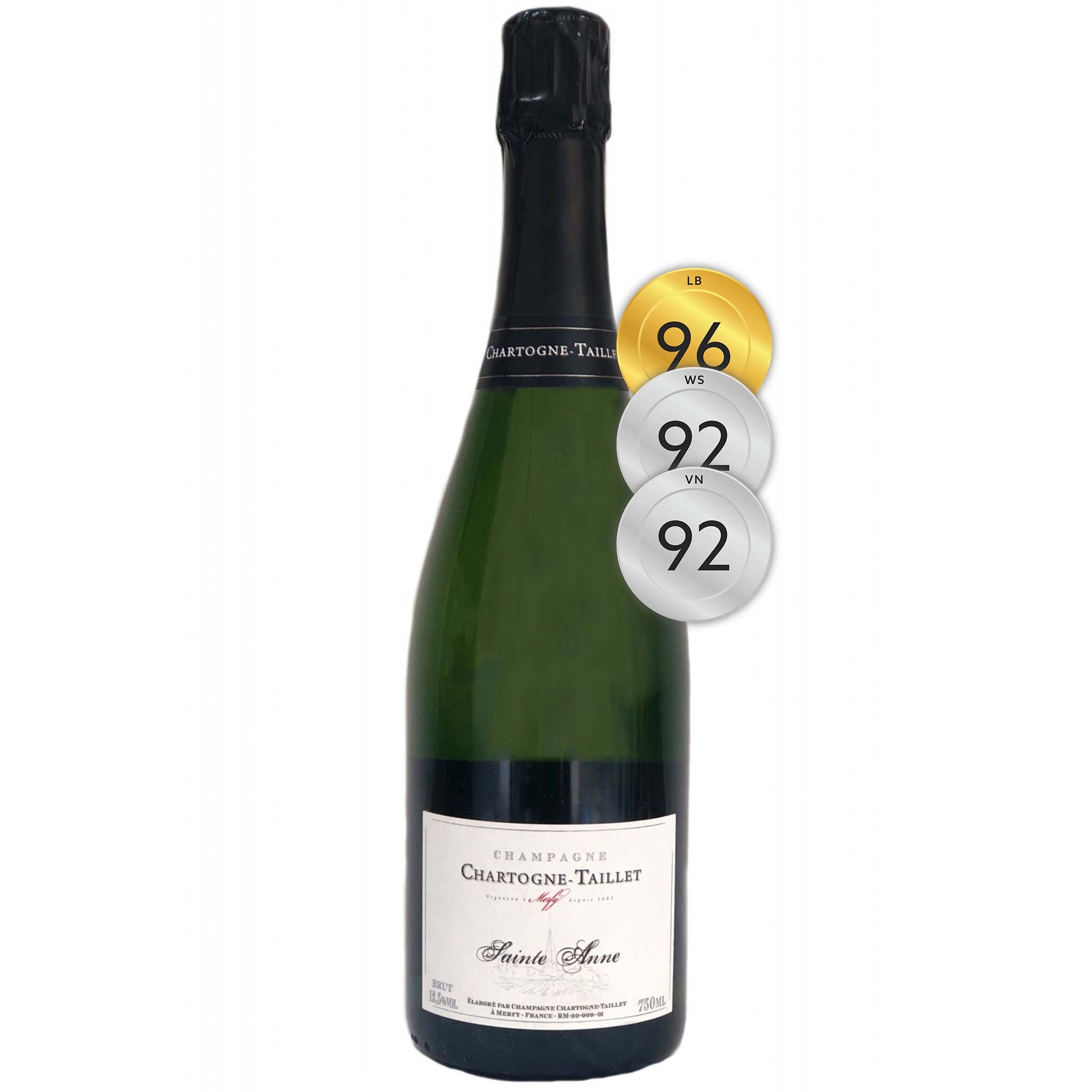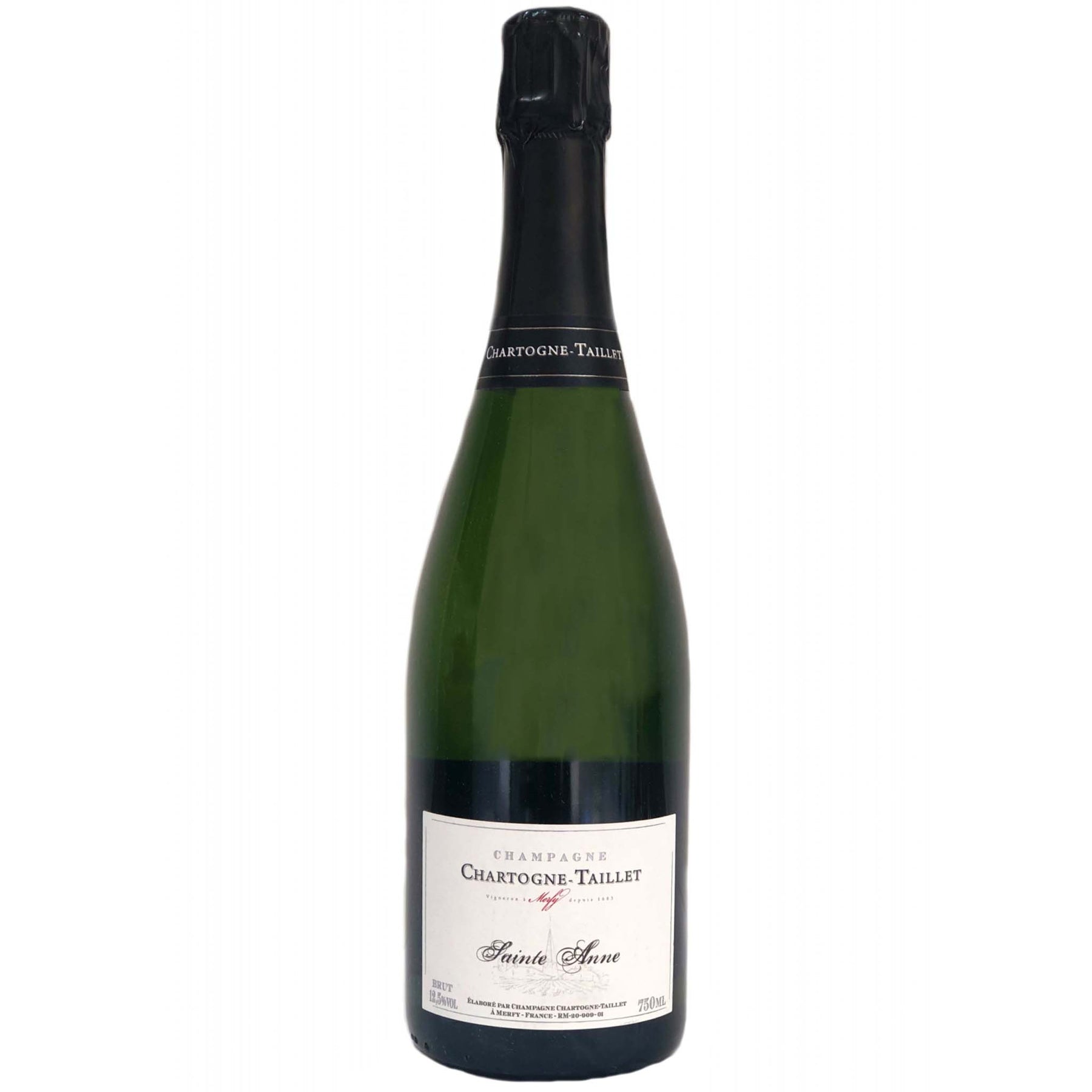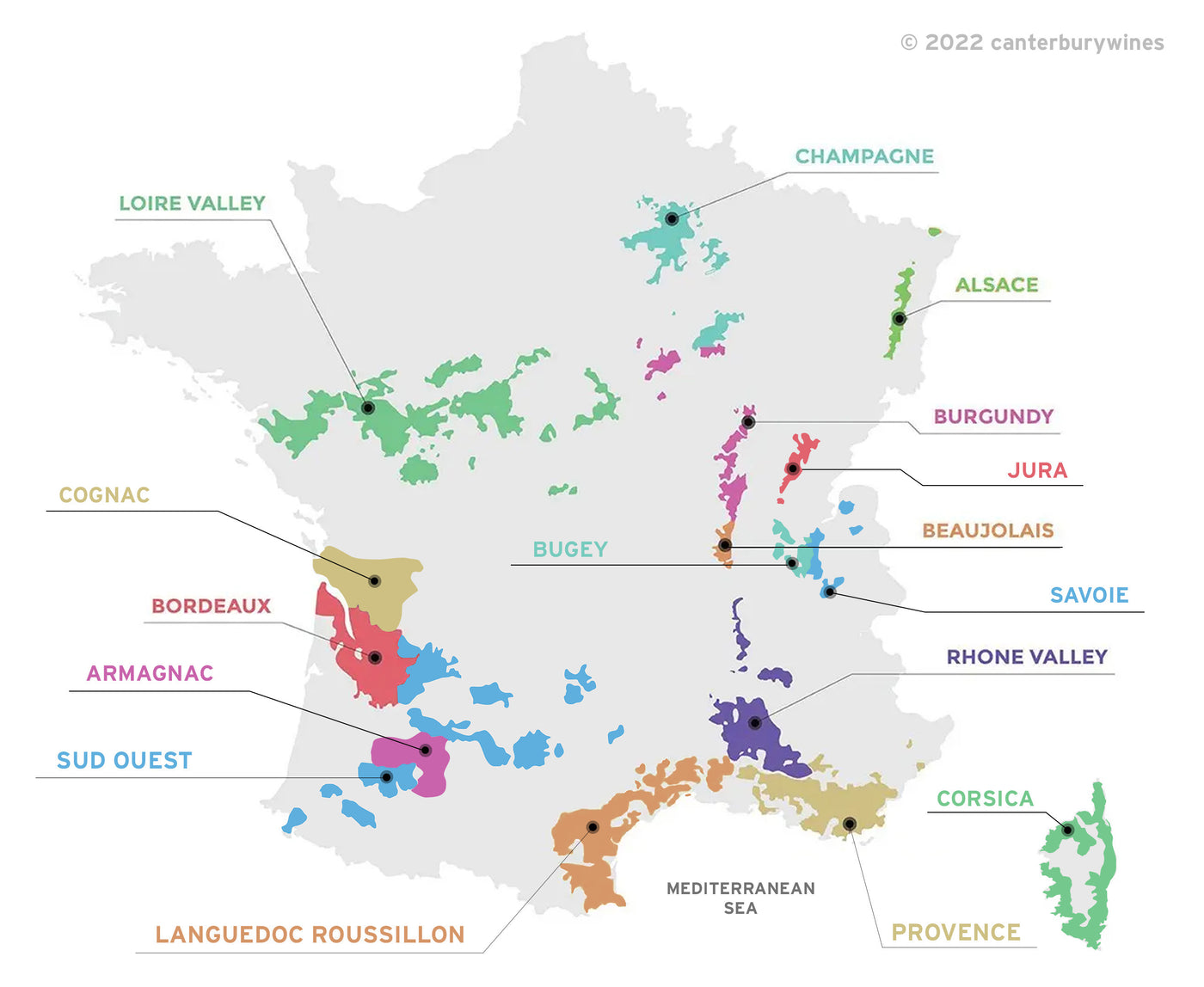

Chartogne-Taillet Cuvée Sainte Anne (Base 2018) NV
Style: Champagne Extra Brut
Varieties: Chardonnay (50%), Pinot Noir (40%), Pinot Meunier (10%)
Closure: Cork
Chartogne-Taillet Cuvée Sainte Anne (Base 2018) NV
Warehouse
34 Redland Drive
Vermont VIC 3133
Australia
Producer: Chartogne-Taillet
Country: France
Region: Champagne
Vintage: Non Vintage
Critic Score: 96
Alcohol: 12.5% Dosage: 5g/l
Size: 750 ml
Drink by: 2028
"Chartogne's largest cuvée, the tank-fermented Saint-Anne, is an excellent offering that remains great value." Wine Advocate
Chartogne-Taillet comprises 11 hectares of vineyards in the village of Merfy in the northernmost outpost of the Champagne region. The area has been planted with vines since the time of the Roman Empire. Winemaking in the family dates back to 1490 but it was only as recently as 2006, when Alexandre Chartogne took over the reins, that things really started to change. He is one of Champagne’s brightest young talents – his pure, energetic wines have set a new regional standard. His largest cuvée, the tank-fermented Saint-Anne, is an outstanding champagne, fully the equal of much more pricey cuvées.
"A Champagne that sets the mood from the first sip. The soft beads reflect the shimmer of indulgence. A richer style indeed, but so well balanced. It's a vinous style no doubt, with quite spectacular complexity that fills the mouth with croissant and marmalade. Fresh butter, pine nuts but with a streak of salinity that keeps the wine's longitude." Wine Pilot
"The young star in Champagne is Alexandre Chartogne. He took over his father’s champagne house Chartogne-Taillet and turned it into one of the most desired companies among sommeliers of the best restaurants in the world." Jolanta Smiciene
Expert reviews
"Base 2018: A Champagne that sets the mood from the first sip. A golden colour in the glass indicates some richness. The soft beads reflect the shimmer of indulgence. A richer style indeed, but so well balanced. There are notes of baked apple, brown spice, chamomile, pear compote with a gingery finish. It's a vinous style no doubt, with quite spectacular complexity that fills the mouth with croissant and marmalade. Fresh butter, pine nuts but with a streak of salinity that keeps the wine's longitude.
This is promising work from rising star Alexandre Chartogne, a disciple of Anselme Selosse who he describes as his 'wine father'. This is both a Winter's aperitif and a Summer's gastronomic wine on the table. Date tasted: October 2022." Liinaa Berry, Wine Pilot - 96 points
"Base 2018: The NV Brut Cuvée Ste.-Anne is one of the great values in Champagne. Broad and creamy, with high-toned aromatics, the Cuvée Ste.-Anne is a total pleasure bomb. The intensity of the flavors is so beautifully dialed up. Orchard fruit, dried flowers and spice all flesh out effortlessly. More than anything, though, I admire the wine's balance and raciness. This release is based on 2018. Dosage is 5 grams per liter. Disgorged: March, 2021." Antonio Galloni, Vinous Media - 92 points
"Base 2018: A distinctive Champagne, high-toned and floral with its cherry blossom and spice aromatics accenting the steeped raspberry, orange peel and salted almond flavors. Finely textured, like raw silk on the palate, this is bright and mouthwatering on the lingering finish. Disgorged January 2021. Drink now through 2024." Alison Napjus, Wine Spectator - 92 points
Alexandre Chartogne

Since taking over his family’s 12ha estate in 2006, Alexandre Chartogne has emerged as one of Champagne’s brightest rising stars. He uses organic treatments, promotes biodiversity through cover crops, and encourages deep-root systems through regular ploughing, often by horse rather than by tractor. In the cellar, each parcel is vinified separately with indigenous yeasts, in either oak barrels, stainless-steel tanks or concrete eggs, depending on the individual wine.
""In the beginning was Anselme," recounts Alexandre Chartogne, when I ask him to tell the story of his meteoric rise to number among the stars of the grower Champagne movement. "It was Anselme Selosse who taught me that a winegrower's responsibility is to understand his terroir. So I came home to Merfy and started digging holes." Chartogne duly discovered that his soils were very different from those of the Côte de Blancs, finding inter-fingering layers of marine sands, loess, sandstone and clay in around ten different configurations in his different parcels. Those differences, he noted, corresponded to the delimitation of Merfy's climats, and looking back to the village's pre-revolutionary history, Chartogne attributes that precision to the Benedictine monks who once farmed this region—harking back to a terroir-focused viticultural era when wine growing in Champagne had more in common with wine growing in Burgundy. Today, Alexandre Chartogne is trying to recapture that spirit." Wine Advocate
The following text is from an article by champagne expert Jiles Halling that appeared in My Man in Champagne
June got off to a brilliant start when, on Saturday 1st, with two friends from the USA, I went to visit Alexandre Chartogne of Champagne Chartogne-Taillet in his family home in the village of Merfy.
To Find Gems You Need To Look In Different Places
Not for the first time I discovered a fantastic old home hidden discretely behind a huge wooden door giving directly onto the main street. I use the term ‘main street’ loosely because even though the main road through Merfy is called Grand Rue, it’s hardly a motorway; in fact it’s downright sleepy.
It’s incredible what treasures you can find tucked away in the small villages. That applies equally to the champagnes as to the people and Alexandre Chartogne was no exception to the rule.
Merfy is not the first village that springs to mind when you think of champagne. In fact it’s a bit off the beaten track in an area called Le Massif Saint Thierry just North West of Reims, but its wines have been in demand since as long ago as the 12th century, perhaps because of the village’s south and south-east facing slopes that can soak up the sunshine.
Alexandre wasted no time in showing us into his newly converted den where he proudly brought out a leather bound book called the Registre des Taillets which is rather like a family diary and dates back to the early 1700s. The first entry reads: “I was born in February 1700…”, the words of Fiacre Taillet whose name is used for one of the cuvées produced by the family over 300 years later.
Clearly Alexandre has done a lot of research not only on the family history, but also into the nature of the soil in Merfy. It’s a topic which he is obviously passionate about and it’s crucial to understanding the different champagnes in the Chartogne-Taillet range.
Out came the map of the village and the more detailed plan of the individual plots of vines and that’s when Alexandre took up pencil and paper himself.
Each plot has its own character
Alexandre is a young man of 29 years of age who has travelled quite a bit outside Champagne, speaks excellent English, and in the space of a few years has started making a name for himself by producing champagnes of real character due in large part to the fact that they almost all come from the vineyards of Merfy. One of the fascinating things about champagne and wine in general is the way in which they are all slightly different and have their own personality, but this doesn’t happen by accident; there’s always a very good reason why a champagne tastes the way it does and in the case of Chartogne-Taillet, the variation in soil is a determinant factor.
Chartogne-Taillet owns 14 hectares of vines the majority of which are in and around Merfy itself, so Chartogne-Taillet champagnes are a real reflection of the soil of the village. If you think this might be a limiting factor for Alexandre as a winemaker, think again. Merfy boasts a bewildering variety of different soils and subsoils to produce a complete spectrum of champagnes from all three main grape varieties plus a few areas of Arbanne, a little-known, little-used variety which is nevertheless, still permitted in Champagne.
As we were served a glass of Sainte Anne, a blend of 50% Chardonnay and 50% Pinot Noir, Alexandre explained how different soil types produce different champagnes: the red sandy soil with a high iron content that you find in the plot called Chemins de Reims, gives a blanc de blancs champagne with an attractive note of aniseed and a distinctive warmth on the palate.
Ungrafted Vines
The plot called Les Beaux Sens is doubly unusual. The soil is almost entirely sandy and produces Pinot Meunier with a pronounced mineral quality.
Even more intriguing is the fact that these Pinot Meunier plants are extremely rare because they are ungrafted. The Phylloxera mite that devastated most of the European vineyards some 150 years ago is unable to move freely in sandy soil and so a few small pockets of vines remained unaffected by the blight. The majority of the Champagne vineyards were saved by grafting French vines onto American root stocks that were resistant to Phylloxera, but amazingly this little plot at Les Beaux Sens escaped and to this day the Pinot Meunier planted here are ungrafted.
Meanwhile, in Les Alliées there’s a heavier clay soil with higher water retention that reduces the mineral element, but accentuates the fruitiness of the Meunier.
And so on and so forth, plot by plot: a treasure trove of discoveries explained by someone who is an amiable teacher and a great communicator.
Grower Champagnes and Grandes Maisons
To my mind this is the beauty and fascination of champagne; not just the pleasure of meeting with and talking to these wonderful people, but the way many of them work with their land to give you, the drinker, a real insight into the countless nuances and subtleties of the Champagne region.
It’s the big difference between grower champagnes and big brands. The big brands cannot match the local knowledge and specialisation of their smaller cousins so they choose to make champagnes that give you a broad brush stroke of the entire Champagne region. It’s a strategy that has stood them and champagne in general in good stead, but I don’t think you can really know champagne unless you have discovered the ins and outs of grower champagnes. It requires a little more effort and patience, but to my mind it is well worth it.
I could go on and on about Chartogne-Taillet for whom the goal is to allow what Nature provides to produce an array of champagnes each of which is unique and expressive of its origins. As Alexandre says "These days what we eat and what we drink is becoming ever more standardised, but we are all different so we need different food and different wines".
So, what (more) is special about Champagne Chartogne-Taillet?
No one could call Chartogne-Taillet champagnes standardised: with the exception of Cuvée Sainte Anne, they are all vintages, that is to say that the grapes come from a single year’s harvest although Alexandre has chosen not to declare them as vintages.
Chartogne-Taillet uses only natural yeasts and ferments many of their cuvees in concrete, egg-shaped containers that facilitate the movement of the yeast and enhances the depth and complexity of the wine.
They plough 6 hectares of their vines with horses and plan to increase that as soon as time and money allows.
Wild grass is allowed to grow between the rows of vines and Alexandre measures the health of his vineyards by the type of grass that he finds growing there.
Each topic could be a blog pots or video in its own right, which gives me a lot of ideas for the future.
About the winery

Maison de Champagne Chartogne-Taillet (pronounced 'shar-ton thai-yeh') comprises 11 hectares of vineyards in the village of Merfy, seven kilometres north of Reims. Merfy, one of a crescent of villages of the Massif de Saint-Thierry, is in the northernmost outpost of the Champagne region. The area has been planted with vines at least since the time of the Roman Empire. The Benedictine monks of the neighbouring Abbey of Saint-Thierry expanded the vineyards in the 7th century and carefully mapped out the different terroirs.
Winemaking in the family dates back to 1490 with Nicolas Taillet and then Fiacre Tailler in 1540. The Domaine itself dates back to 1920 but it was only as recently as 2006, when Alexandre Chartogne took over the reins from his father Pierre, that things really started to change.
Alexandre was fresh from time working with Anselme Selosse, widely acknowledged as one of the best winemakers in the Côte des Blancs and maybe even in all of Champagne. Anselme's focus is on getting the highest quality fruit for his champagnes, he believes in the relationship between healthy soils and the quality of the grapes and has always been a great advocate of organic farming and low yields. Alexandre's beliefs mirror Anselme's philosophies closely.
Alexandre believes that the transmission of terroir only comes through careful work in the vineyard. To this end, no chemicals, herbicides or insecticides are used, cultivation is only when required, sheep and chickens roam the vineyards and organic compost is used where necessary. All effort is focused on maximising life in the soil. Half of his parcels are plowed by horse to avoid compacting the soil so that it is better aerated and and he plans to increase that as soon as time and money allow.
Merfy boasts a bewildering variety of different soils and subsoils to produce a complete spectrum of champagnes from all three main grape varieties. Alexandre has developed the style of the Maison towards precise Champagnes, thanks to extensive plot selections. In the cellar each parcel is vinified separately. Primary fermentation is wild, and mostly in second-hand barriques, although Alexandre has also used concrete eggs for some time. The second fermentation in the bottle is induced using yeasts selected from each specific parcel. Dosage has always been low, but like the majority of winemakers in Champagne, is in lower proportions each year.
Chartogne-Taillet makes outstanding champagne, fully the equal of much more pricey cuvées. Alexandre Chartogne’s reputation as one of Champagne’s most thoughtful and ambitious growers shows through in his wines. He is one of Champagne’s brightest young talents – his pure, energetic wines have set a new regional standard.
"Chartogne, it will be clear, is a thoughtful man, seriously committed to letting each of his various parcels express its own identity. Like the wines of his mentor, Anselme Selosse, these are very far from being fruit-driven wines despite their scale and power, for they're undeniably mineral and soil-driven. Since Chartogne is keeping back more and more wine, the quantities of his elusive single-vineyard bottlings are smaller and smaller, and these are not easy Champagnes to find. But happily, his largest cuvée, the tank-fermented Saint-Anne, is an excellent offering that remains great value." Wine Advocate


France
There are 16 major French wine regions, each known for their own unique grape varieties, terroir and wines. They are Alsace, Armagnac, Beaujolais, Bordeaux, Bugey, Burgundy, Champagne, Cognac, Corsica, Jura, Languedoc- Roussillon, Loire Valley, Provence, Savoie, South-West and the Rhône Valley.
The largest region is Languedoc- Roussillon, the oldest is Provence, the most influential and famous are Bordeaux, Burgundy, Champagne, Loire Valley and the Rhône Valley.
French wine is labelled by wine region or appellation rather than by grape variety (except in Alsace). In order to guarantee the quality and provenance of French wines, the French government established the Appellation d'origine contrôlée (AOC) system. Under this system the wine label indicates the geographical origin, quality and, generally, the style of a wine. Many regions are home to multiple appellations; for example, the prestigious Bordeaux region in the southwest of France has over 60 growing appellations.


